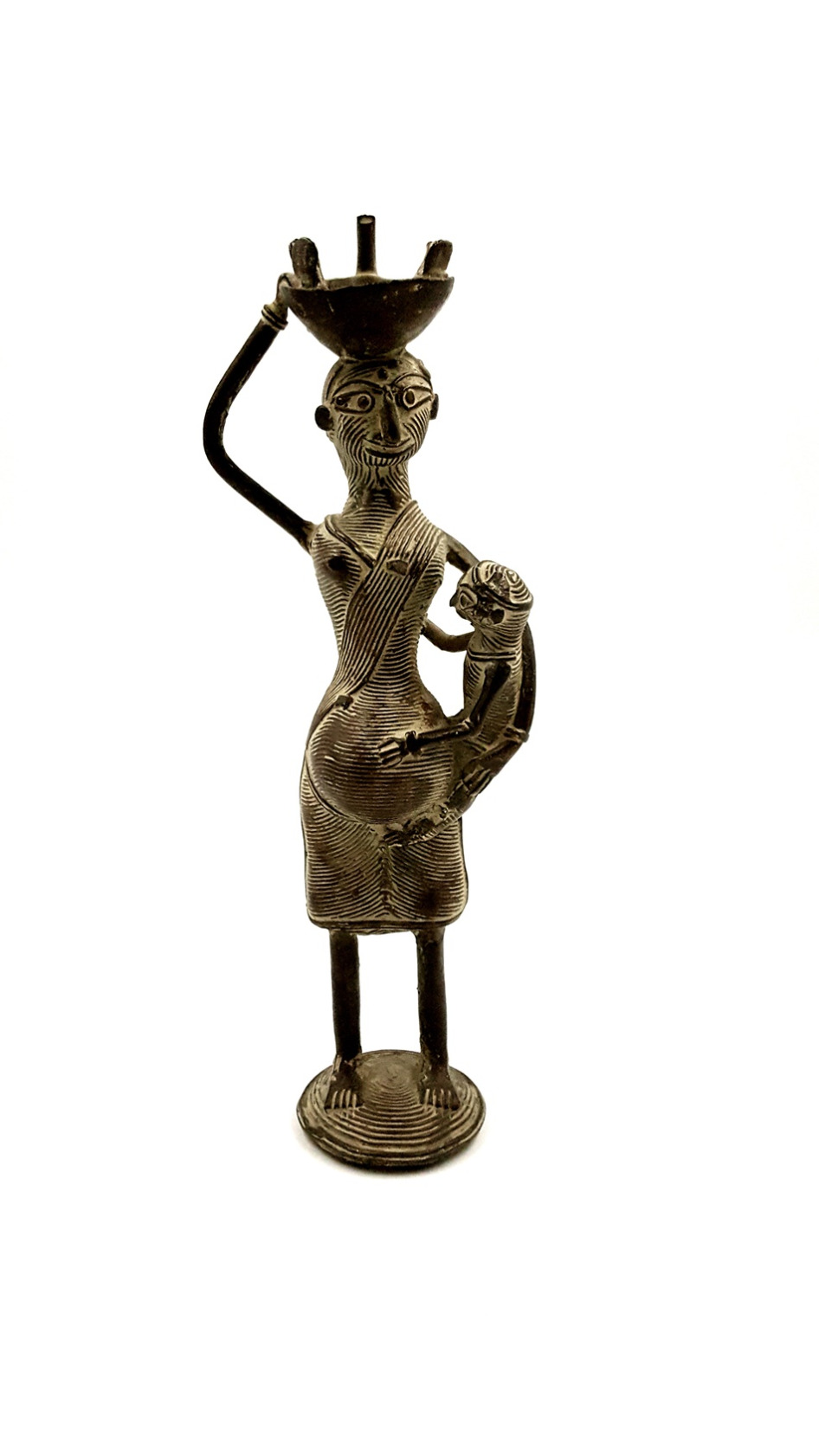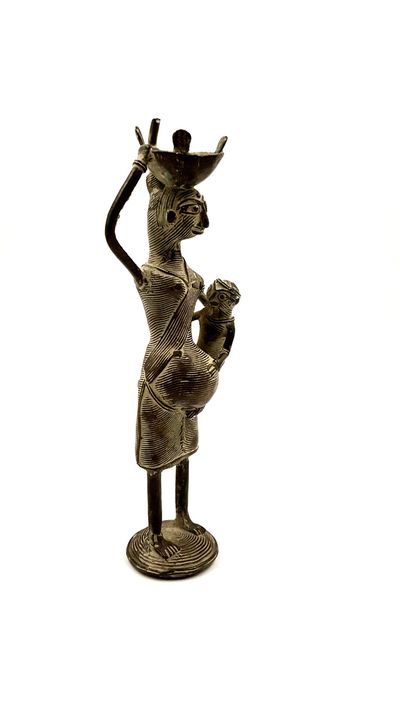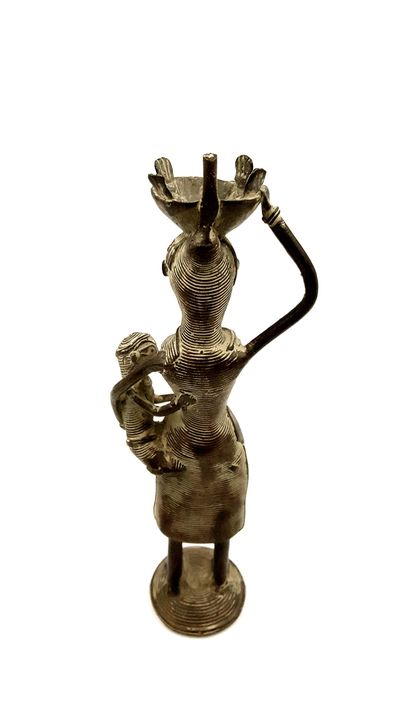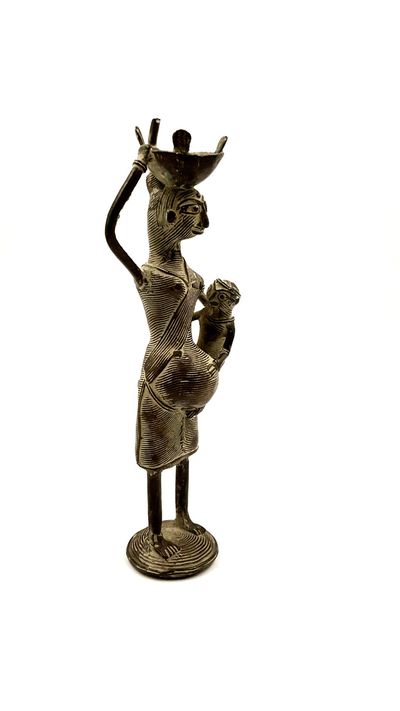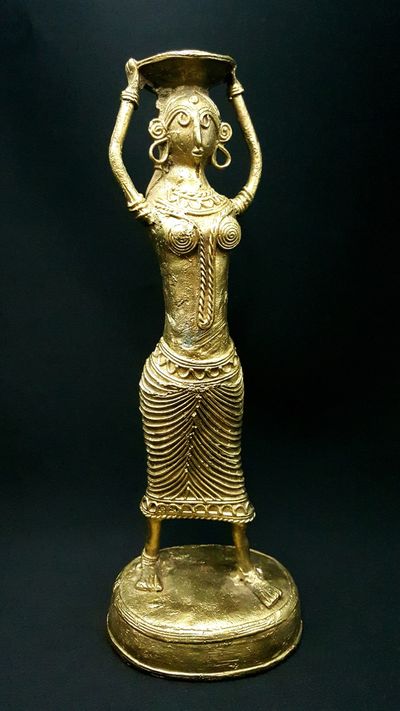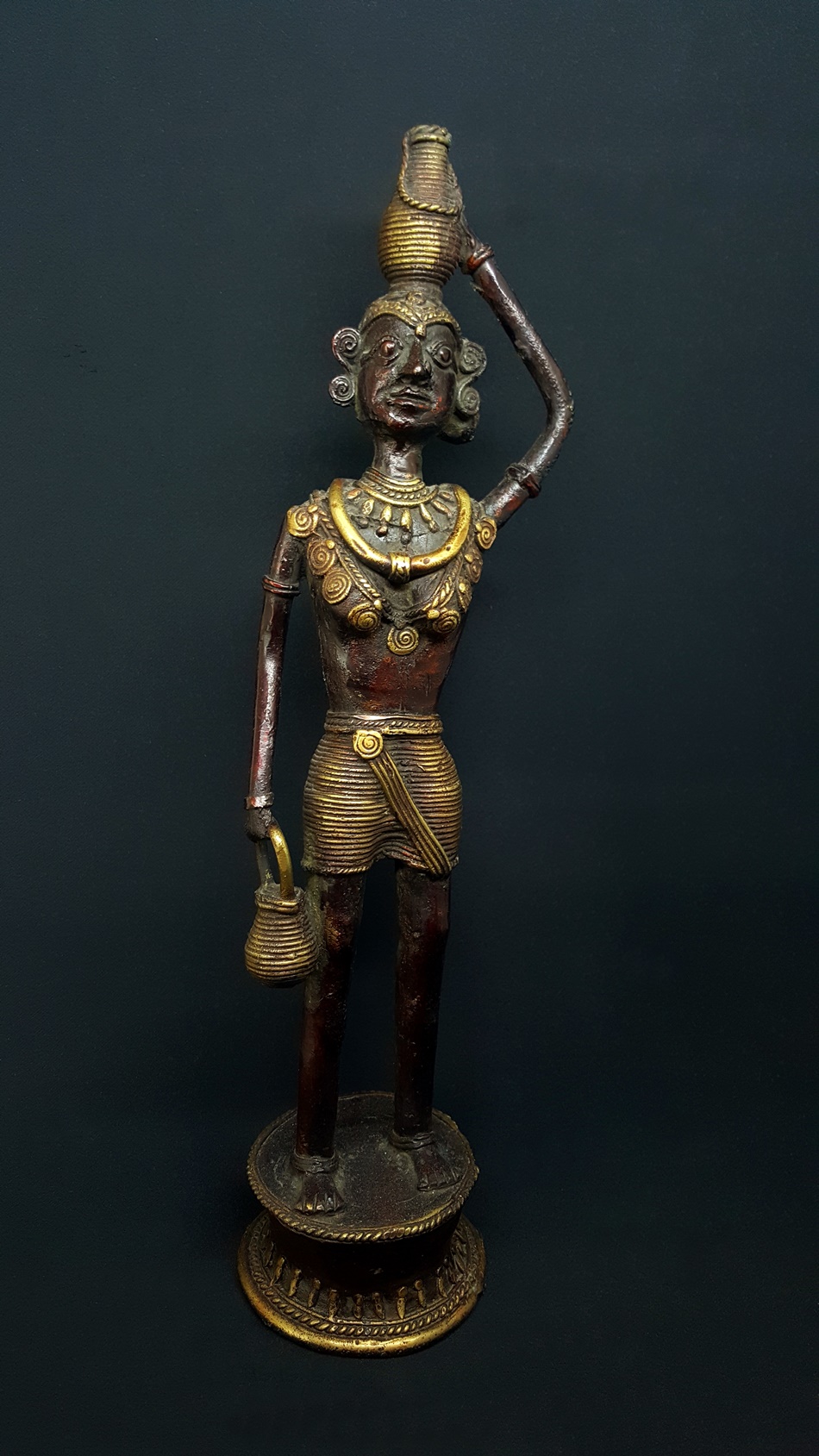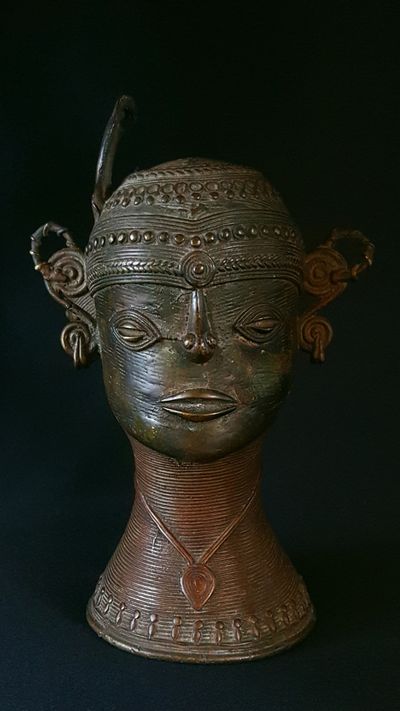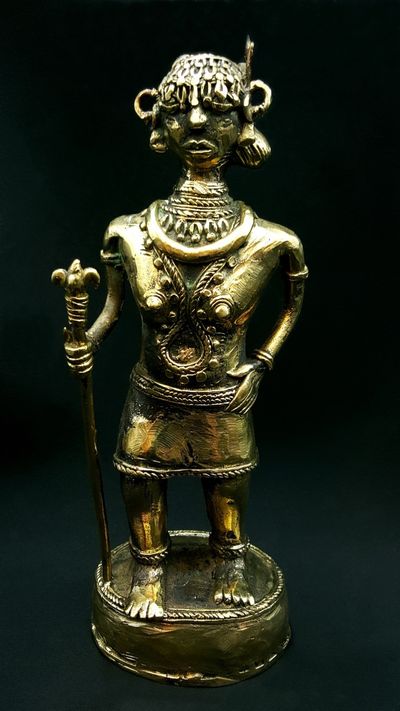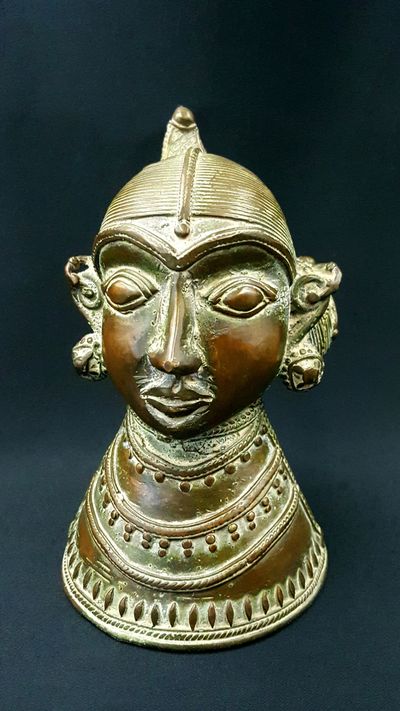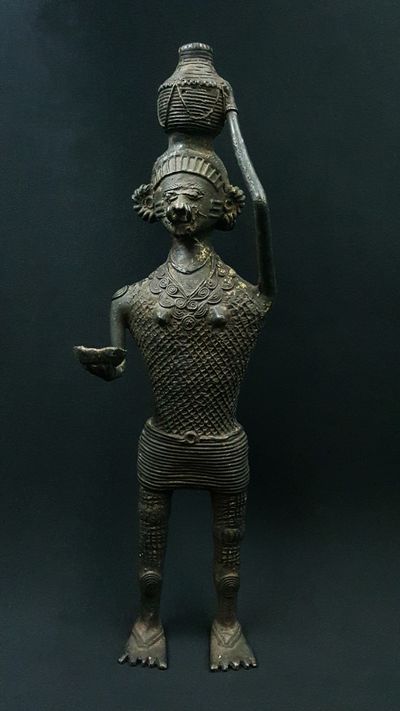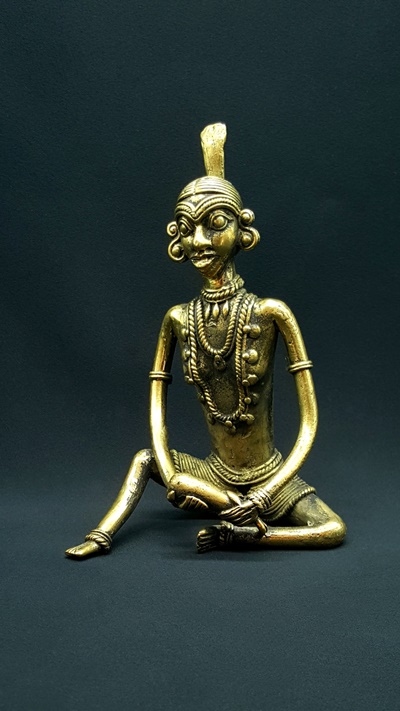Statue Femme enceinte avec son bébé
Vie quotidienne
€140.00
Cette sculpture de femme est représentative de l’art premier : une impression directe transmise par la simplicité des formes, un style épuré, la sobriété. En savoir plus...
Hauteur : 12 cm
Poids : 0,665 Kg
Art tribal
Technique de la cire perdue - Alliage cuivreux
Origine : Odisha - Inde
Livraison gratuite UE, Norvège et Suisse
Description
L'art tribal
Les tribus, pratiquant l'art Dokra, sont originaires de la région de Bastar, dans l'Inde du Sud (aujourd'hui situé dans l'État de Chattisgarh), elles ont émigré plusieurs siècles auparavant et se sont installées un peu partout en Inde du Nord au Sud.
La plupart ont gardé leur tradition (art culinaire, vestimentaire, fêtes...) et leur religion animiste.
L'art Dokra : un savoir millénaire dans la fabrication de statues en laiton
Cet art tribal indien artisanal n'a pas changé depuis des millénaires (+ de 4000 ans) et la technique utilisée est toujours celle de la cire perdue : un modèle grossier en argile est réalisé puis recouvert de cire par l'artiste qui va lui donner sa forme définitive avec ses détails. L'ensemble est à nouveau recouvert d'un mélange argileux puis chauffé dans un foyer ouvert où un alliage cuivreux sera coulé. voir Blog
Les objets produits par les artistes Dokra peuvent être de nature usuels : coupelle, bougeoir... des instruments de musiques (cuivres), ou bien artistiques tels que des bijoux, des animaux : chevaux, éléphants, tortues..., des statues d'hommes et femmes représentant des scènes de vies quotidiennes et des divinités hindous adoptées par les tribus : Ganesh, Lakshmi,...
Posture Scène de vie quotidienne représentant une femme tribale enceinte revenant de la pêche : coté gauche, elle porte son jeune enfant sur la taille tandis que sa main droite maintient en équilibre un récipient rempli de poisson sur sa tête !
L'effort doit être intense, pourtant il se dégage de cette statuette une étrange grâce. La silhouette est d'une grande finesse, élancée : le ventre bien arrondi, au lieu d'alourdir, donne une grande stabilité à cette femme.
Les traits du visage sont simples, il n'y a pas de bijoux. Les yeux et les les sourcils sont étirés au maximum donnant une impression de grande présence. La coiffure est typique avec le chignon et la coiffe à base de plumes. Un simple pan du sari permet d'entrevoir le vêtement.
L'essentiel est exprimé en quelques traits donnant une impression vraie.
